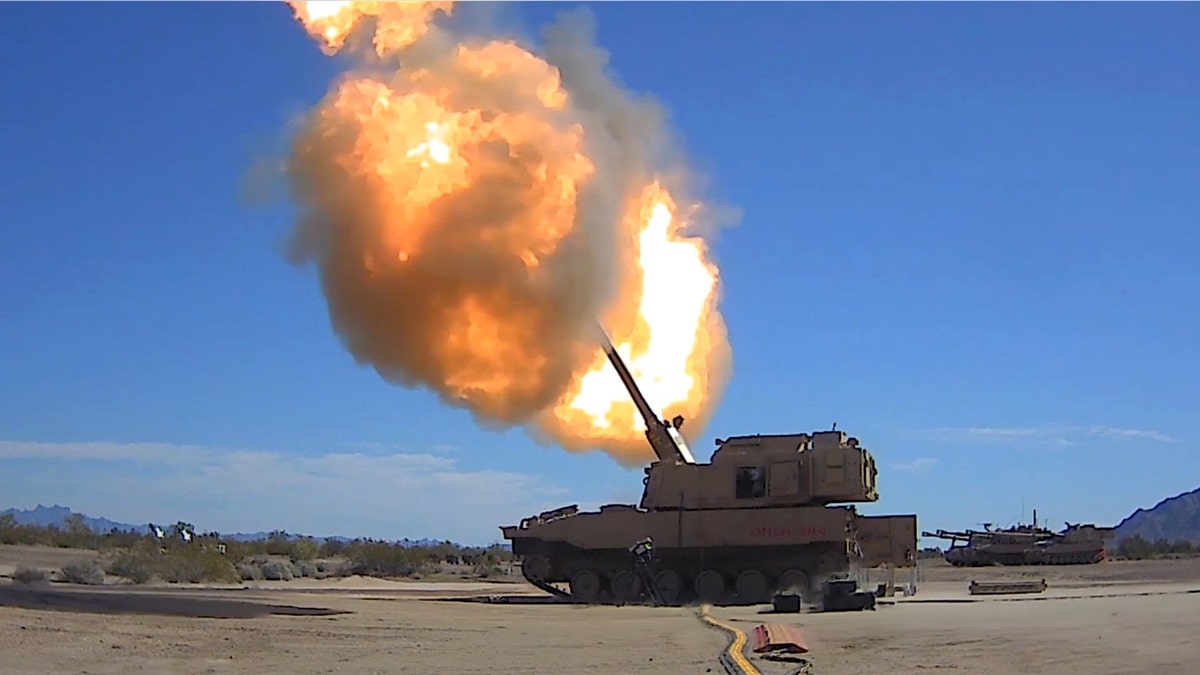USNS Comfort to begin treating coronavirus patients
Commanding officer Capt. Patrick Amersbach on precautions being taken to keep other patients and crew safe from COVID-19 exposure.
Get all the latest news on coronavirus and more delivered daily to your inbox. Sign up here.
Adding respirator equipment, anti-viral medications and advanced sanitizing equipment into tanks and armored vehicles, engineering weapons systems with biological warfare resistance and hardening technologies and creating new tactical, strategic and doctrinal nuances to warfare requirements -- all seem like things the Pentagon might start to explore as a way to adapt to longer-term impacts of COVID-19.
Perhaps forward-operating, dismounted infantry might soon be carrying advanced bio-hazmat equipment as part of their required gear? Perhaps Navy ships will need to add new kinds of bio-war technologies into on-board layered defense systems? It certainly seems feasible that a potential enemy might seek to disperse or drop pathogens from the air or even some kind of approaching missile. Perhaps the Navy is already thinking about new kinds of bio-defense-equipped interceptor missiles engineered to take out approaching weapons at safe stand-off ranges? Would advancing infantry develop new protocols to better destroy enemy soldiers from six feet or more stand-off distances in situations where they might otherwise engage in close-in hand-to-hand combat? Maybe F-22s and F-35s will be engineered with new air-filter technology to fend off any aerial pathogens sent toward them as an attack?
It almost goes without saying that military medics, forward-operating medical personnel and even make-shift war hospitals will increasingly be equipped with medicines and technologies needed to fight off, defend and treat sickness caused by pathogens potentially released by enemies. The medical community is already working on vaccines for COVID-19, and many are doubtless exploring new kinds of human-immunity approaches, medications and procedures.
ARMY SENDS NEW MEDICAL TEAMS TO HARD-HIT NYC AREAS
With all of these potentially alarming or dangerous possibilities in mind, senior service leaders are already starting to think about engineering new technologies and adjusting warfare procedures.

U.S. Army photo of the firing March 6 at Yuma Proving Grounds, Ariz. - file photo. (U.S. Army)
In fact, Air Force Chief of Staff Gen. David Goldfein said there is already some evidence that adversaries are “already trying to take advantage of this situation,” according to an April 1 Air Force report.
Gen. John Murray, Commander of Army Futures Command, recently told reporters that the service was already beginning to look at new requirements related to the long-term combat impacts of COVID-19.
PENTAGON MODIFIES 1,500 CONTRACTS IN CORONAVIRUS, SMALL BUSINESS SUPPORT EFFORT
New sanitation protocol is already in place across much of the military services; for instance, Air Force crew members are already sanitizing F-22 cockpits as a way to sustain testing, operations and combat readiness at Joint Base Langley-Eustis, Va.
While soldiers carried hazmat gear to counter Saddam Hussein’s possible use of chemical weapons, new threats in a modern or future warfare environment may need re-adjusted tactics and yet-to-exist technologies.
Interestingly, a 2006 essay from the National Institutes of Health seems to recognize and further anticipate the potentially devastating impact of virus-caused epidemics. At the time, the essay, titled “Tweaking Innate Immunity: the Promise of Innate Immunologicals as Anti-infectives,” posits that the “H5N1 avian influenza virus could rapidly cause anywhere between four and 150 million deaths in a short time are serving as a wake-up call that we, as a global society, must safeguard ourselves against an increasing number of infectious threats.” (US National Library of Medicine, NIH, by Kenneth Rosenthal)
PENTAGON TAKES AIM AT CORONAVIRUS WITH 8,000 VENTILATORS
Many have compared COVID-19 to a virulent kind of flu-virus, prompting fast-moving efforts to discover new vaccines -- as suggested by the 2006 NIH essay.
CLICK HERE FOR COMPLETE CORONAVIRUS COVERAGE
CLICK HERE TO GET THE FOX NEWS APP
“New and exciting insights into activation and the importance of the innate immune system are revolutionizing our understanding of protection against infections and how vaccine adjuvants work,” it says.





















